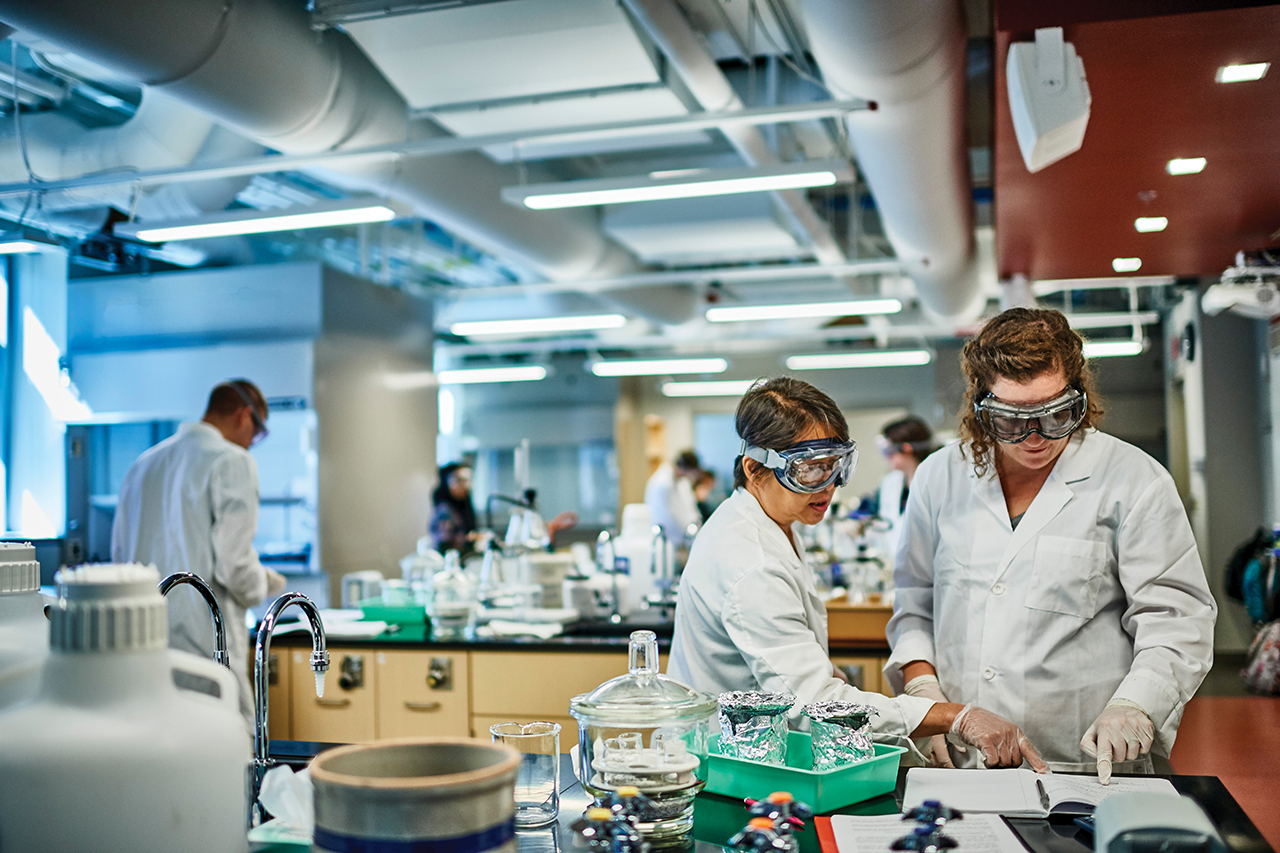
President Mark S. Schlissel
CaptionThe primary focus of my work as president is to position the University of Michigan for perpetual excellence and public impact in research, creative work, performance, patient care and education.
For me, the key elements of this focus leverage the longstanding strengths of U-M. I want us to encourage research that addresses major societal issues, and scholarship and creative work that promote understanding and enrich the human experience. We will seek to provide the best and most forward-looking undergraduate, graduate and professional education available today to best prepare the leaders of tomorrow. We will also foster the translation of cutting-edge medical research into outstanding patient care in our comprehensive health system.
“The biggest problems we face as a society don’t conveniently set themselves up to be solved by one-source solutions.”
Leveraging Breadth
Many of the initiatives we are developing will advance excellence at U-M for years to come—while also generating significant achievements in the near term. These will include strategic investments in precision medicine (medical treatments tailored to individuals based on genetics and behaviors), academic innovation (using technology, data analytics, and engagement to enhance teaching and learning) and the alleviation and prevention of poverty. They will be the type of high-impact research collaborations that allow us to take advantage of the full breadth of the university’s academic portfolio.
The biggest problems we face as a society don’t conveniently set themselves up to be solved by one-source solutions. Problems don’t know what discipline they are supposed to fall under; they are just problems.
To approach problems from every angle and perspective, U-M can bring to bear the intellectual power of 19 outstanding Ann Arbor schools and colleges, a world-class health system and two highly valued regional campuses. Two initiatives we launched in the past year are examples of this approach:
Our Data Science Initiative, along with the Michigan Institute for Data Science (MIDAS), is enhancing our faculty members’ ability to conduct research while fostering new approaches related to big data. By managing, curating and sharing massive amounts of information, we can provide dramatic insights into issues such as the nature of disease, climate change, social behavior, business and economic decision-making, engineering challenges and discovery in the basic biological and physical sciences. We can then use these insights to develop applications that improve lives.
The second recent initiative is our Humanities Collaboratory, a novel approach to humanities research. The Collaboratory brings together research teams to work on major projects that create new models for research, enhance the humanities’ impact on society and train the next generation of humanities scholars. Many of the greatest challenges we face in society will only be solved if we can better understand the multifaceted values, histories, ideas and cultures that are unique to communities around the globe.
Projects launched through the Collaboratory include faculty and students using the journal of an eighth-century Buddhist monk to digitally map his travels and illustrate the development of Buddhism itself. In another example, the Precarity Lab team is studying populations that have been disproportionately affected by inequality and insecurity stemming from digital technologies.


“A world-class public research university with a premier health system is an advantage that few can match.”
Amazing Impact
High-impact collaborative research is also a hallmark of the University of Michigan’s health system as well. A world-class public research university with a premier health system is an advantage that few can match.
Our health system is built on a solid foundation of strengths—patient care and education linked directly and deeply to leading biomedical research and discovery—that provides a great platform on which to build our future and enhance research all across U-M. For instance, University of Michigan researchers used 3-D printers to produce tracheal stents they had developed, which surgeons then used to save the lives of three babies born with potentially lethal malformations. Those babies are now preschoolers, by the way.
I am also proud that the UM-Dearborn and UM-Flint campuses continue to enhance their regional impact and respond to community needs. Both campuses have long and proud histories of improving lives through education and research.
In fall 2016, UM-Dearborn opened a newly renovated Natural Science Building that includes more than 35 labs and other facilities that promote interactive group learning. UM-Flint has provided tremendous resources to residents during the water crisis, including free educational sessions, a new early childhood educational program, and partnerships among faculty and community leaders.
“There simply is no university better suited to advance the highest ideals of what a public research university should be.”
Financial Strength Supports Excellence
The University of Michigan is in a strong position financially, as the Chief Financial Officer’s Report details.
Our volume of research has held strong, with $1.4 billion in research expenditures, despite the sector’s challenges and ever-increasing competition for funds. The quality of our faculty and our ability to partner with the private sector give U-M tremendous advantages in this regard.
We continually seek greater operational efficiencies while also making important investments to maintain and enhance academic excellence. We also never lose sight of our goal of restraining growth in tuition.
U-M has also implemented double-digit percentage increases in financial aid in nine of the last 10 years, including a 10.8 percent increase for the current year. In fact, the net cost of attendance at U-M has not grown in seven years for most students with financial need. More than 70 percent of our in-state undergraduates are receiving need-based financial aid.
U-M is the only university in the state—and one of 23 nationwide—to be recognized by the U.S. Department of Education for having demonstrated both high post-graduation earnings as well as low costs for the lowest-income students.
The Victors for Michigan campaign directly supports our work to help students attend U-M. This $4 billion campaign includes a $1 billion goal for student support. We are more than 60 percent of the way to reaching that ambitious goal.
Donors continue to be essential partners in our efforts to enhance excellence and opportunity at U-M. Their generosity makes our academic programs stronger while providing scholarships, fellowships and research opportunities here in Michigan and abroad.
Keeping U-M’s high-quality education affordable depends on all of these essential elements—cost control, increasing financial aid, tuition restraint and philanthropy—along with what we hope will be a continuation of reinvestment by the state in higher education.

U-M will be celebrating its 200th anniversary in 2017.
CaptionIn the year to come, we will be celebrating the University of Michigan’s bicentennial and the amazing impact we have made over the last 200 years. A major focus of the bicentennial will be to ensure our excellence continues into the future.
There simply is no university better suited to advance the highest ideals of what a public research university should be.
Sincerely,

Mark S. Schlissel
President

